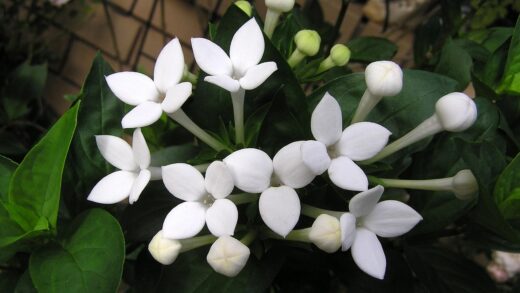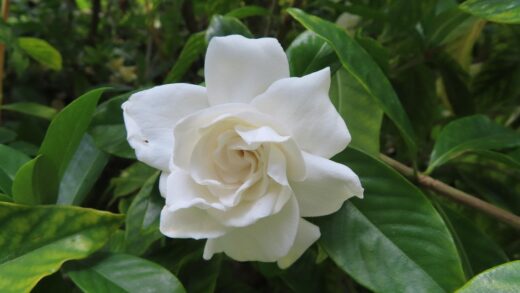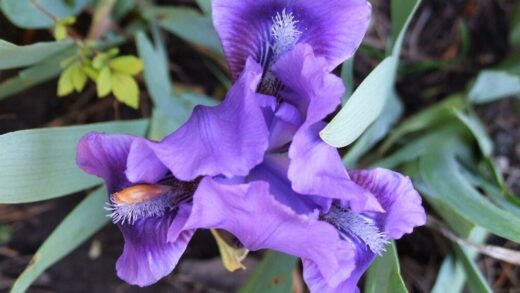As a plant with tropical and subtropical origins, the sleeping hibiscus is not equipped to handle the freezing temperatures of a temperate winter. Therefore, for gardeners in colder climates, developing a successful overwintering strategy is not just beneficial, it is essential for the plant’s survival. This process involves more than simply bringing the plant indoors; it requires a thoughtful transition to a different environment and an adjustment in care to accommodate its natural winter dormancy. Successfully guiding your sleeping hibiscus through the winter ensures that this beautiful specimen will return to its full glory year after year, rewarding your efforts with its unique charm.
The primary goal of overwintering is to protect the plant from frost and freezing conditions, which would be fatal. This means moving any container-grown plants indoors before the first expected frost date in your region. The transition from the outdoor environment to the indoors can be a shock to the plant, often resulting in some leaf drop as it acclimatizes to the lower light levels and drier air. By understanding and anticipating this, you can take steps to minimize the stress and help the plant settle into its temporary winter home for a period of rest and rejuvenation.
During the winter months, the sleeping hibiscus will enter a state of dormancy or semi-dormancy. Its growth will slow down dramatically, or cease altogether. Consequently, its need for water and nutrients will be significantly reduced. The most common mistake made when overwintering tropical plants is continuing to care for them as if it were still summer. Overwatering during this dormant period is a primary cause of failure, leading to root rot from which the plant may not recover. Adjusting your care routine to match the plant’s slower metabolism is the key to a successful winter indoors.
The overwintering period is a phase of rest, not active growth. The objective is not to encourage new leaves or flowers, but simply to keep the plant alive and healthy until it can be moved back outdoors in the spring. Providing the right combination of light, temperature, and reduced watering will allow the plant to conserve its energy. When spring returns, this stored energy will fuel a vigorous flush of new growth, quickly returning the plant to its summer splendor. This annual cycle of growth and rest is a fundamental part of its long-term health and vitality.
Preparing the plant for winter
The preparation for bringing your sleeping hibiscus indoors for the winter should begin in the late summer or early autumn, well before the threat of the first frost. Start by thoroughly inspecting the plant for any pests. Pests like aphids, spider mites, and mealybugs can thrive in the warm, dry conditions of a heated home, and a small, unnoticed population can quickly explode into a major infestation indoors. Carefully check the undersides of leaves, the stems, and the leaf axils. It is much easier to treat for pests while the plant is still outside.
More articles on this topic
If you do find any pests, treat the plant accordingly before bringing it inside. You can use a strong spray of water from a hose to dislodge many common pests. For a more thorough treatment, applying horticultural oil or insecticidal soap a week or two before the move can be very effective. This preventative treatment ensures that you are not inadvertently introducing a pest problem into your home that could then spread to your other houseplants. A clean bill of health is the best way for your hibiscus to start its winter vacation indoors.
This is also a good time to do some light pruning. Trim away any dead, damaged, or diseased branches. You can also prune back some of the longer, leggy stems to reduce the overall size of the plant, making it more manageable to move and accommodate indoors. This pruning can help to shape the plant and will encourage bushier growth when it resumes active growth in the spring. Avoid any hard pruning at this stage; the goal is simply to tidy it up and reduce its footprint.
Finally, in the weeks leading up to the move, begin to acclimate the plant to lower light conditions. If it has been in a very sunny spot, move it to a shadier location for a couple of weeks. This gradual transition will help reduce the shock of moving from bright outdoor light to the much lower light levels found inside most homes. This process of hardening-off in reverse can significantly lessen the amount of leaf yellowing and drop that often occurs after the plant is brought indoors.
Indoor location and conditions
Once inside, the sleeping hibiscus needs to be placed in a location that provides the best possible conditions for it to survive the winter. The ideal spot will offer plenty of bright, indirect light. A south-facing window is often the best choice, as it provides the strongest light during the winter months. If you do not have a location with sufficient natural light, you may need to supplement with a grow light to prevent the plant from becoming weak and spindly. The goal is not to encourage active growth, but to provide enough light for the plant to maintain its health.
More articles on this topic
Temperature is another critical factor. The sleeping hibiscus should be kept in a cool but frost-free location. An ideal temperature range for its winter dormancy is between 10 and 15 degrees Celsius. A cool room, an unheated but attached garage that stays above freezing, or a basement with a window can be excellent locations. Avoid placing the plant in a warm living area or near heat sources like radiators or vents. Warm temperatures can confuse the plant, discouraging dormancy and encouraging weak, leggy growth that is susceptible to pests.
The dry air of a heated home is a significant challenge for tropical plants during the winter. To combat this, you can increase the humidity around your sleeping hibiscus. Placing the pot on a tray filled with pebbles and water is an effective method; as the water evaporates, it creates a more humid microclimate around the plant. Grouping it with other plants can also help, as they will collectively raise the humidity through transpiration. Occasional misting can provide a temporary boost, but it is less effective at raising ambient humidity over the long term.
Ensure the location has decent air circulation to help prevent fungal diseases, but keep the plant away from cold drafts from windows or doors. Sudden drops in temperature can cause the plant to drop its leaves. In essence, you are trying to create a stable, cool, and bright environment where the plant can rest peacefully through the winter months without being subjected to stressful fluctuations in temperature, light, or moisture.
Winter care: watering and feeding
The most significant change in your care routine during the overwintering period will be a drastic reduction in watering. Because the plant is dormant and not actively growing, its water needs are minimal. Overwatering is the single greatest danger to an overwintered sleeping hibiscus. The soil should be allowed to dry out almost completely between waterings. To check, insert your finger deep into the soil; if you feel any moisture, wait longer before watering. When you do water, provide just enough to moisten the soil, rather than the deep soaking you would give it in the summer.
The frequency of watering will depend entirely on the conditions in your overwintering location. In a cool, low-light environment, you might only need to water the plant once every three to four weeks, or even less. The goal is simply to prevent the root ball from becoming bone dry and desiccating completely. It is far better to err on the side of keeping the plant too dry than too wet during this period. The plant will likely lose many of its leaves, which is a natural part of dormancy and not necessarily a sign of a problem.
Fertilization should be stopped completely during the overwintering period. The plant is not in a growth phase and cannot utilize the nutrients. Adding fertilizer to dormant soil will only lead to a buildup of mineral salts that can damage the root system. You should have already ceased fertilizing in the autumn as the plant’s growth began to slow. Do not resume feeding until the spring, after you have moved the plant back outdoors and see clear signs of new growth.
Continue to monitor the plant for pests throughout the winter. Pests like spider mites can thrive in the dry indoor air. A periodic check of the leaves, especially the undersides, will help you catch any potential issues early. Because the plant is in a weakened, dormant state, it is more vulnerable to pest damage, so vigilance is important. If you do find pests, treat them promptly with insecticidal soap or by wiping them off with a damp cloth.
Transitioning back outdoors
The process of moving the sleeping hibiscus back outdoors in the spring is just as important as bringing it in for the winter and should be done with care. Do not rush to move the plant outside at the first sign of warm weather. Wait until all danger of frost has passed and nighttime temperatures are consistently remaining above 10 degrees Celsius. A sudden cold snap can damage or kill a plant that has spent the winter in a protected environment.
The transition back to the outdoors should be gradual, following a process known as “hardening off.” The tender leaves that grew in the lower light of the indoors can be easily scorched by direct sun and damaged by wind. Start by placing the plant in a deeply shaded, protected location for a few hours on the first day. Over the course of one to two weeks, gradually increase the amount of time the plant spends outside and slowly expose it to more direct sunlight, starting with the gentle morning sun.
As you move the plant back outdoors and as it begins to experience warmer temperatures and brighter light, you will notice it starting to “wake up.” New leaf buds will begin to swell and open. This is the sign that the plant is ending its dormancy and entering its active growth phase. As this new growth appears, you can gradually begin to increase the frequency of your watering to meet the plant’s renewed needs. The soil will begin to dry out much more quickly in the outdoor environment.
Once the plant is fully acclimated to being outdoors and is actively growing, you can resume your regular care routine. This is the time to do any major pruning to shape the plant and encourage bushy growth for the season ahead. You can also begin your regular fertilization program to provide the nutrients the plant needs to fuel its summer growth and flower production. This careful transition will ensure your sleeping hibiscus moves seamlessly from its winter rest to a spectacular summer display.


















